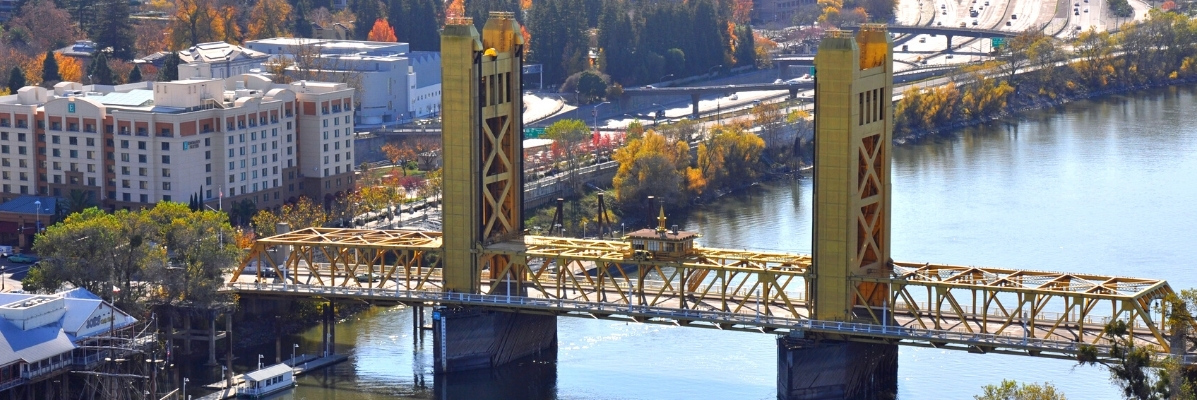
The staff reports and comment letters associated with our final meeting of 2021 are available in our Archives. The Executive Officer’s report with updates and links to supplementary materials for a wide array of activities and projects is also available. Commission Chair Lieutenant Governor Kounalakis[1] reflected on the Commission’s key achievements this past year, including adopting a new five-year strategic plan to guide the Commission’s work through 2025. The Chair also acknowledged the Commission’s ongoing evolution and productiveness during these unprecedentedly challenging times.
American Rescue Act Plan Funding/Covid-19 Relief for Ports
Earlier this year, Governor Newsom announced a one-time $250 million allocation from the federal American Rescue Plan Act to California’s ports to mitigate the negative economic impacts resulting from the Covid-19 pandemic. The $250 million, part of the State’s funding allocation from the American Rescue Plan, is intended to help California’s ports recover from the dramatic losses in revenue they experienced during the pandemic. The Commission authorized disbursement of over $136 million to California ports to mitigate the pandemic’s negative economic impacts and support ports’ economic recovery. The Commission’s action will provide critical relief to recipient ports, particularly those with tourism-dense industries. It will prevent layoffs, retain staff, facilitate infrastructure investments that will have positive ripple effects throughout the State, and benefit disadvantaged communities that experienced disproportionate impacts from the Covid-19 pandemic.
Environmental Justice
In 2018, when the Commission adopted an updated Environmental Justice Policy, it committed to accountability and providing an annual implementation update. Keeping with this commitment, staff shared key areas of progress this year, such as interagency coordination, the work staff has done to create the structures necessary to ensure that environmental justice work is institutionalized at the Commission, and its internal justice, diversity, equity, and inclusion efforts. Staff also reported on a recent in-depth meeting with the City of National City to learn more about the community disparities and ways that the City is working to address the myriad environmental justice issues endemic to that area.
Bay Adapt Joint Platform: A Regional Strategy for a Rising Bay
Bay Adapt is a new regional sea-level rise collaborative led by the San Francisco Bay Conservation and Development Commission that is anchored on a strong foundation of climate science and proactive Bay Area adaptation. It is a platform for galvanizing stakeholders to develop and implement action items to help the region adapt faster, better, and more equitably to a rising bay. The Bay Adapt strategy is founded on action and collaboration. The Commission, a voting member of the San Francisco Bay Conservation and Development Commission, adopted a resolution memorializing its support of the Bay Adapt strategy.
Lake Tahoe and Donner Lake Benchmarks
Benchmarks determine rental rates for public trust lands that the Commission leases. The Commission adopted new benchmarks for the Lake Tahoe and Donner Lake area. The new benchmarks, the result of extensive stakeholder input, ensure that the State is fairly compensated according to current market rates for private use of state-owned land. Revenues collected from these leases go back to improving Lake Tahoe, the jewel of the Sierras and a region that is tremendously important to California. Because of the Commission’s action, the people of California, and specifically those who benefit from the Lake Tahoe Science and Lake Improvement Fund, will receive fair compensation from the use of public lands at Lake Tahoe. This is a critical accomplishment for the Commission and Lake Tahoe.
Offshore Wind Energy Planning
Seaports are a critical element of California’s offshore wind energy strategic planning. Earlier this year, the Governor signed AB 525 (Chiu) that requires California to develop an offshore wind energy strategic plan. The Commission is the lead agency to assess the port issues associated with offshore wind energy development. In this context, the Commission authorized the Executive Officer to acquire a consultant to evaluate the necessary investments in California seaports to support offshore wind energy. The Commission also authorized the Executive Officer to enter into an interagency agreement with the California Energy Commission to facilitate a fund transfer to the Commission to support this assessment. The Commission’s action positions the Commission to proceed as quickly as possible to obtain a consultant to help prepare the assessment and ensure we accomplish this component of AB 525 expeditiously.
Future Meetings and Ways to Stay Informed
The Commission’s next public meeting is on February 25 at 1 p.m. You can sign up here to receive updates about this and future meetings. Another great way to stay informed is by following the State Lands Commission on Twitter. Finally, you can watch a recording of the December meeting on the Cal-Span website.
[1] The Commission Chair rotates each year between the Lieutenant Governor and the State Controller. In 2022, the State Controller, Betty Yee, will become the Chair.

